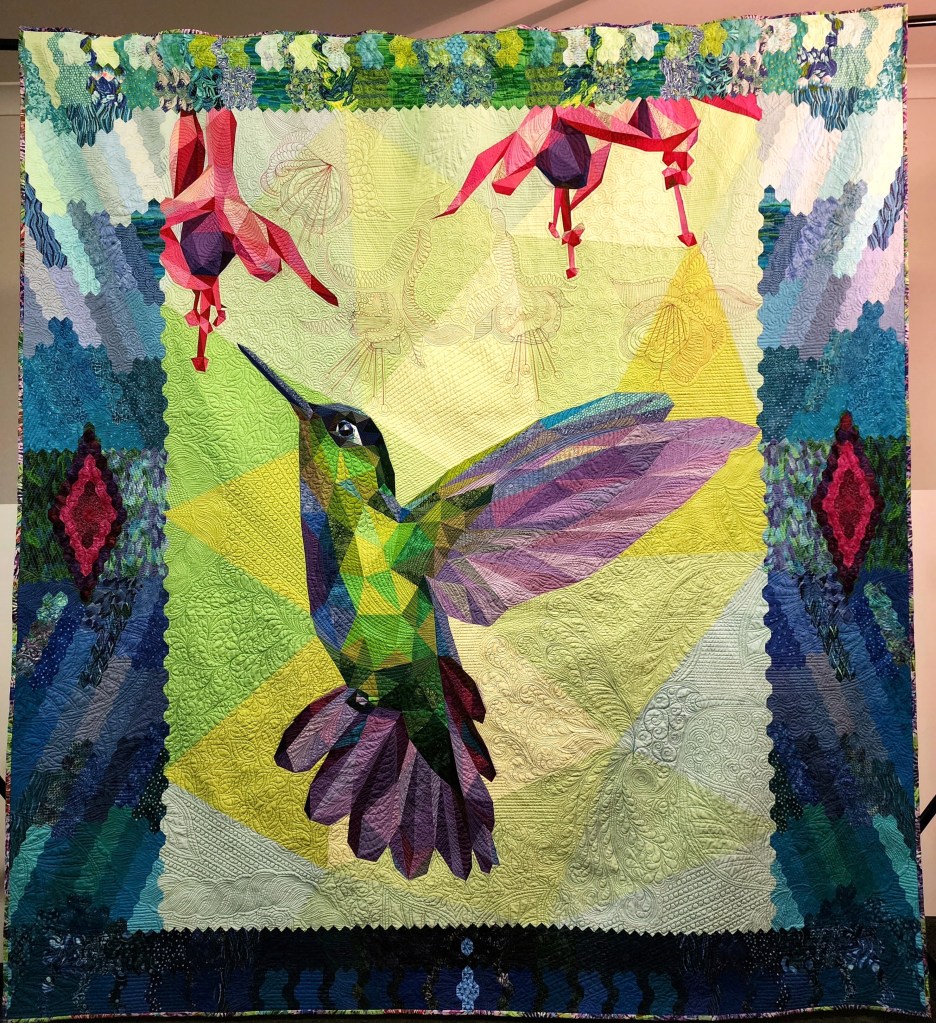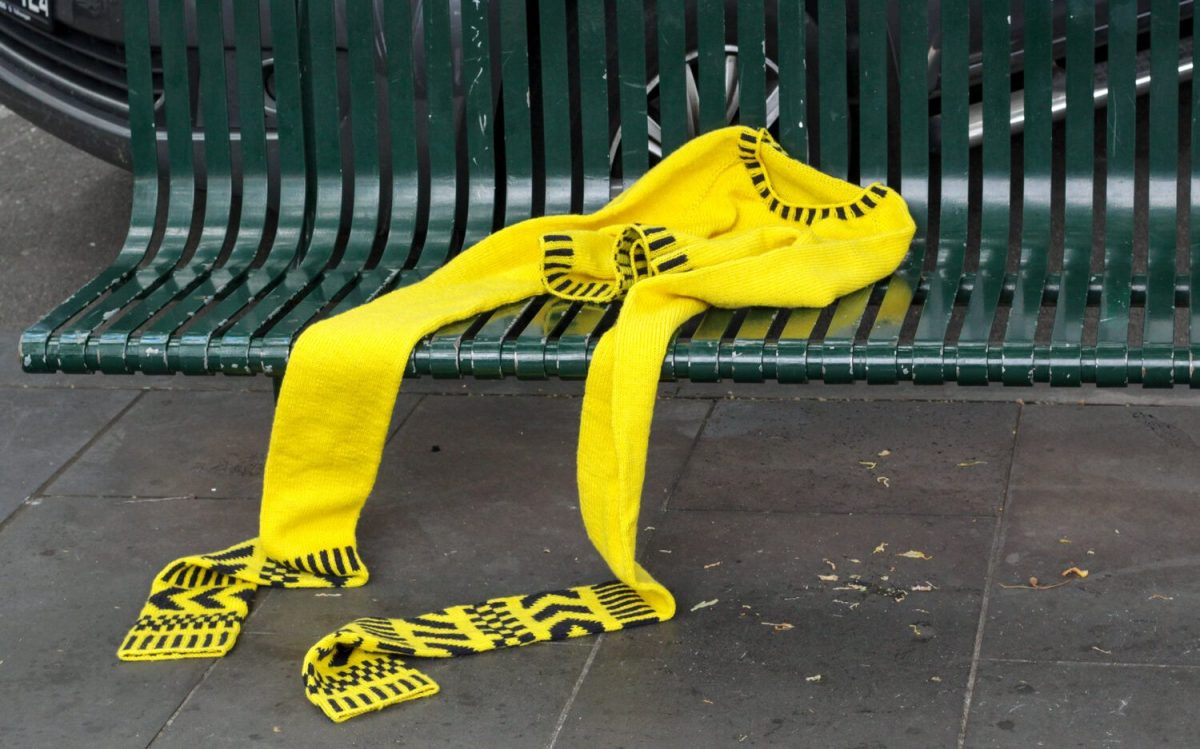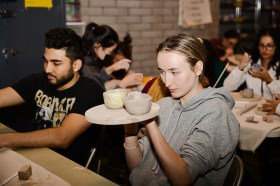Craft hobbies are popular pastimes that can steer our minds away from the stress of life and work while offering a blend of repeated, therapeutic actions and space for creativity.
However, the costs of craft materials can quickly add up, especially with cost of living on the rise. Quality yarn, boutique fabrics, machines and studios can require exorbitant amounts. There are an abundance of craft community memes such as ‘buying craft supplies and using them are two separate hobbies’ and ‘why buy it for $7 when you can make it yourself with $92 of craft supplies’ (£4-48).
For those for whom craft has become a long-term passion, the initial investment is usually worth it, but there are also more budget-friendly ways to approach various popular craft practices.
In this article:
Investing in the craft
Lyn Crump is a quilter who has created award-winning designs. She tells ArtsHub that her biggest investment was a ‘longarm APQS Quilting Machine’. Crump continues, ‘[It] is the most expensive aspect of my art. It is also where I have the most fun and get the greatest mental stimulation. I miss the days when I am not quilting, so the $50,000 (£$26,000) invested in my machine was worth it for the great results I can achieve when using it.
’The second most expensive aspect of my art is my thread “stash” – it is far more extensive than my fabric. I have over 250 large spools of thread surrounding me as I type on the computer in my studio.’
Yet, having this “stash” also means that Crump can quilt for weeks without spending anything more, until ‘I see some new notion that I feel I must have and splurge,’ she says. These have included new rotary cutter blades and sewing machine needles that were on special, which together cost around $120 (£62).
Curator, arts writer and Artistic Director of Bus Projects (Melbourne, Australia), Sophia Cai, is also an avid knitter. Though Cai is currently taking a break from her craft, aka experiencing a “knitting rut”, she tells ArtsHub that the most expensive component of her practice is yarn.
‘I learned quickly that I loved hand-dyed yarn (or “indie yarn”), as well as buying high-quality wool yarn from different sources around the world. The online knitting community is quite vast, and I’ve bought yarn from all corners of the globe from different mills and producers.
‘I once went to an international yarn festival in 2019 as part of my honeymoon travels. This is not something I’ve done again or see myself doing again, but I guess travelling for yarn festivals is probably the most expensive aspect! I dream of visiting [the Scottish archipelago] Shetland one day – for the sheep and the Fair Isle knitting.’
When Cai was actively knitting, she would spend dedicated time each night on her craft, but she also loved the portability of being able to knit on the go. ‘I love having my knitting in a project bag, ready to take with me anywhere. It’s one of the reasons I like knitting and crochet more than other crafts, as it can be so transportable.’
Cai continues, ‘When I’m knitting to a deadline or a specific task, I schedule in hours and treat it as I would any other freelance project. I’m actually just about to “knit” a magazine cover, so this is good motivation to get me back to that!’
Is selling your work a good idea?
Many crafters end up turning their hobby into a side hustle or business, where income earned from selling the finished product can help supplement an investment in the latest tools or expensive materials.
However, Crump says entry fees into quilt shows have become another major expenditure for her, alongside ‘the subsequent postage to get [the quilts] interstate or overseas’.
She adds, ‘So far this year, that expense has been about $30 (£15) a week. If I’m fortunate, I recoup these costs in prize money or vouchers where I can shop without depleting my wallet.’

Cai’s knitting project, Safety Yellow Woman, was exhibited as part of Diversity Arts Australia’s I Am Not a Virus project in response to anti-Asian racism in 2020, but she says she wouldn’t go so far as to make knitting into “work”.
’I quickly learned that turning your hobby into a side job or hustle is one of the quickest ways to diminish your love for it,’ Cai explains. ‘I already work in a creative industry (contemporary art curator and writer), and, as I jokingly said to my friend, “I can only earn money from one exploitative industry at a time”.’
There was a time when Cai sold knitted accessories for toys through Etsy, but ‘nowadays I prefer to do trades of my knitted works with other artists for their works. This feels like a more equitable arrangement and recognition of mutual labour’.
Crump also finds it difficult when it comes to making her quilts financially viable. ‘I have only ever sold one piece of my work, after it was hanging in the Quilts Across Queensland Competition at the Ekka [Royal Queensland Show] in Brisbane.’ She continues, ‘As I usually make bed-sized quilts, they would most likely look better hung in a corporate office, and I have not sourced a way to introduce my art to this sector.’
Cai adds that people often underestimate the time and energy needed to create quality works of craft. ‘If you’re buying handmade items, please pay the artists a fair wage,’ she says. ‘It takes a lot more time than you may realise to complete a knitted item such as a hat, scarf or a garment.
’I have major respect for people who sell their knitted work, but personally I prefer to give myself the time and space to make without that pressure,’ says Cai.
Tips on saving
For both Crump and Cai, the biggest way to save is through buying discounted, second-hand material or upcycling from old projects – and, to a certain extent, refusing to follow the latest craft trends.
Crump says she had to get creative while living on a limited income. ‘I do not allow myself to be “sucked” into purchasing the latest fabric lines, and honestly I am not into using other designers’ patterns.
’The only time I have purchased a fat quarter of a complete fabric line was through an Instagram destash, and I am still using small amounts of it in different quilts four years later.’
When Crump was at the height of her productivity, she would make around 20 quilts a year, but those ‘bright statement type fabrics’ are still being integrated into new projects. ‘My current hand-piecing project was cut out over two years ago from the leftovers of a major quilt and from my mother-in-law downsizing her sewing room. I only needed to purchase one feature fat quarter to pull a king-size quilt together, [though] it took me quite a few hours to design a quilt to utilise the fabrics and fit within a predetermined theme.’
Read: Craftivism led by women
In the knitting realm, some unravel second-hand sweaters to reuse the yarn, but Cai admits, ‘I don’t know if I can bring myself to unravel another sweater though!’
Cai also reuses leftover yarns or waits for sales when it comes to items really worth splurging on. She says, ‘I’m also deliberate with my purchasing choices – preferring to buy from businesses or stores that share similar values to mine (for example, not supporting exploitative labour practices or animal cruelty by the use of angora yarn etc).’
Places she recommends include op shops (‘I haven’t had much luck, but I know others who have!’) and online marketplaces.
Cai concludes, ‘Being part of online communities, there are also marketplaces where you can buy yarn or supplies from another knitter (a “destash sale”). I’ve also done trades with people, whether exchanging yarn or knitted items for other items.’





